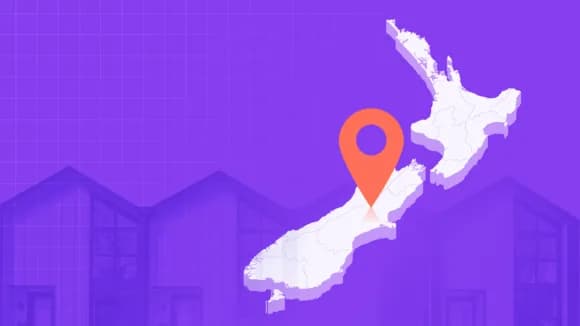
Property Market
What's happening with NZ house prices right now?
Get the latest insights on New Zealand’s property markets, including trends, growth areas, and investment opportunities across regions.
Property Market
6 min read

Author: Ed McKnight
Resident Economist, with a GradDipEcon and over five years at Opes Partners, is a trusted contributor to NZ Property Investor, Informed Investor, Stuff, Business Desk, and OneRoof.
Reviewed by: Laine Moger
Journalist and Property Educator, holds a Bachelor of Communication (Honours) from Massey University.
Loading...
As at September 2025, the median house price in Tasman is $780,000. This is up from $430,000 10 years earlier. That means that the median Tasman property increased in value by 6.14% each year, or $35,000 on average.
The most expensive suburb in Tasman is Redwood Valley, which has a median house price of $1,243,400. That means that Redwood Valley's median house price is 159% of Tasman’s median.
The least expensive suburb in Tasman is Takaka, which has a median house price of $658,900. That means that Takaka's median house price is 84% of Tasman’s median.
Over the last 24 months (Sep 2023 - Sep 2025), Parapara had the fastest-growing house prices in all of Tasman, at 4% per year.
The suburb that grew the slowest over that period was Hope, which grew at a rate of -1% per year.
Loading...
Tasman house prices look relatively cheap compared to where we'd expect them to be.
In the above graph, when the purple line is below the baseline (black line), Tasman's house values are undervalued. This suggests there is a buying opportunity in the region.
When Tasman’s house values are above the baseline, other regions have buying opportunities.
How is this calculated? Click on the accordions below to find out.
Over the next 25 years (2023 - 2048), Tasman district's population is expected to grow by 13.76%.
That means Tasman district's population is expected to grow from 59,600 to 67,800 people. An increase of 8,200.
Loading...
The above graph shows how quickly house prices have increased or decreased over the previous 12 months. This is also known as ‘capital growth’.
So does this show how the property market is going right now?
Yes and no.
It shows how expensive properties are today compared to 12 months ago.
While this will give us a good sense of how property values have changed, it’s not the only thing to consider.
You might also look at how quickly property values are going up (or down) from month to month, the number of property sales and how quickly properties are selling.
Loading...
The above graph shows the median rent within a given month.
The data comes from the Ministry of Business Innovation and Employment (MBIE) and is provided through their Tenancy Services website. It is based on all the rental bonds lodged by private landlords within the month.
Loading...
This graph shows the annual growth in median rents.
This data also comes from the Ministry of Business Innovation and Employment (MBIE).
Loading...
The above graph shows the total number of properties sold over the prior 12 months. For example, if looking at the data for August 2023, the graph will show all the sales between September 2022 – August 2023.
The data comes from the REINZ Market Insights Report and The Real Estate Institute of New Zealand (REINZ) collects data directly from agents.
You might be wondering: “How does the volume of sales impact house prices?”
They don’t impact house prices on their own. But a high number of sales represents a hot property market.
That’s because there are a lot of people out there buying property.
That’s why when sales volumes are high, property prices typically increase at the same time.
When property sales are falling, typically, property prices are also soft.
Loading...
Tasman District is made up of 16 suburbs. The most expensive suburb is Redwood Valley, which has an average house value of $1,243,400. While the most affordable suburb is Takaka, which has an average house value of $658,900.
Over the last 24 months of all the Tasman District suburbs (Sep 2023 - Sep 2025), Parapara had the fastest-growing house prices at 3.88% per year.
The suburb that grew the slowest over that period was Hope, which grew at a rate of -0.75% per year.
Resident Economist, with a GradDipEcon and over five years at Opes Partners, is a trusted contributor to NZ Property Investor, Informed Investor, Stuff, Business Desk, and OneRoof.
Ed, our Resident Economist, is equipped with a GradDipEcon, a GradCertStratMgmt, BMus, and over five years of experience as Opes Partners' economist. His expertise in economics has led him to contribute articles to reputable publications like NZ Property Investor, Informed Investor, OneRoof, Stuff, and Business Desk. You might have also seen him share his insights on television programs such as The Project and Breakfast.